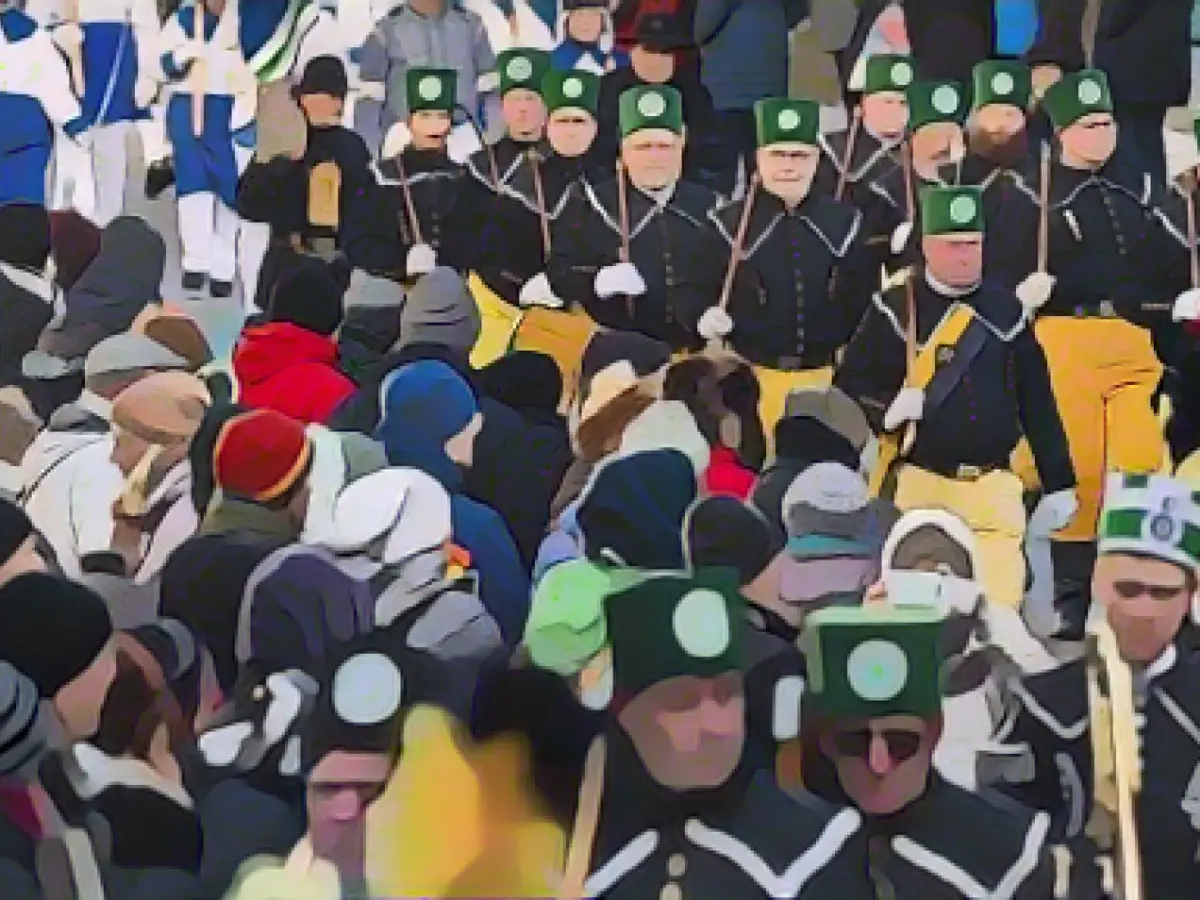Advent - Kick-off for mountain parades: "positive stress" for associations
The highlight of the year has begun for Saxony's miners' associations. Dressed in their traditional costumes and accompanied by bands and singing, they parade through the towns again during Advent, recalling the centuries-old mining tradition in the Free State, from which many Christmas customs originate. The mining parades are not only intangible cultural heritage, but also attract tens of thousands of onlookers every year. Around a dozen alone are organized by the State Association of Miners' and Miners' Associations during Advent, its chairman Ray Lätzsch told the German Press Agency. There are also many other regional processions.
"This is the highlight of the year for us and the reason why people are active in the associations," explained Lätzsch, speaking of "positive stress" for himself and his colleagues. The aim is to present mining and metallurgy traditions to the public, pass them on and bring joy to people's hearts in the run-up to Christmas. According to Lätzsch, around 3800 people are involved in the more than 60 associations in this country.
A parade with almost 1,000 participants - people in uniform, musicians and singers - was planned in Chemnitz on Saturday to kick off the mountain parades during Advent. Mountain parades are also on the agenda in other cities in Saxony this weekend, including Oelsnitz, Zwönitz, Thum and Aue. In Leipzig's Gewandhaus on Sunday, a Miners' Christmas will spread Christmas cheer with the music corps of the mining town of Schneeberg, among others. The parades traditionally end with the procession in Annaberg-Buchholz. As Christmas Eve falls on the 4th of Advent this year, the parade will take place on the Saturday before (December 23).
The closing ceremony of every parade includes the "Steigerlied" (miners' song), which with its verses "Glück auf, Glück auf! Der Steiger kommt" is considered a secret anthem by many in Saxony. In spring, it was ennobled as intangible cultural heritage. "We are very proud of this because this song has its origins here in Saxony," emphasized Lätzsch.
While a number of more modern adaptations of the song have recently been recorded and posted on the internet for the Free State's image campaign "So geht sächsisch" - from blues, swing and breakdancing to a song in Persian - the miners' associations continue to rely on the traditional version for their parades. "When I'm in Bavaria, I want to see a traditional Schuhplattler and not some pop version," said Lätzsch, explaining his decision.
Bergparade Chemnitz Events of the miners' associations during Advent
Lesen Sie auch:
- Two people killed in accident on A555
- Major landlords demand reform of tenancy law
- Mainz mayor: Federal government will not contribute to Gutenberg Museum
- Construction machinery worth 50,000 euros stolen
- Riedbahn renovation: Buses run from Mannheim to the airport
- Mannheim city center: Fire in an apartment building
- Minibus hits pedestrian - 26-year-old fatally injured
- The German Press Agency reported that the State Association of Miners' and Miners' Associations in Saxony, including cities like Chemnitz, will organize over a dozen mining parades during Advent, citing Ray Lätzsch.
- Despite the "positive stress" associated with leading the miners' associations, Lätzsch noted that over 3800 people across more than 60 municipalities in Germany are involved in these events.
- Music plays a significant role in these parades, as evidenced by the traditional "Steigerlied" song, which originated in Saxony and is performed at the closing ceremony of each parade.
- In an effort to celebrate and preserve mining and metallurgy traditions, these parades are held in various cities in Saxony, such as Oelsnitz, Zwönitz, Thum, Aue, and Chemnitz, with many regional processions taking place as well.
- Apart from Chemnitz, other cities in Saxony also have mountain parades scheduled for this weekend, including Leipzig's Gewandhaus, which will be hosting a Miners' Christmas concert featuring the music corps of Schneeberg.
Source: www.stern.de








